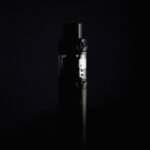Lung cancer is a rapidly fatal disease. People search for the best lung cancer treatment in the world which could cure them. However, even in the best cancer centers, lung cancer survival is not greatly improved.
There is hope that the latest targeted immunotherapy could improve survival rates with minimal side effects. However, most of these novel treatment strategies are only available when the patient is enrolled in a clinical trial.
Until now, most patients are treated with the same lung cancer treatment guidelines throughout the world.

Most Effective Treatment for Lung Cancer
Since every type of lung cancer and the issues connected with the person affected by said illness differ from person to person, there is no one optimum treatment option available for lung cancer. As a result, the available options for therapy might also vary.
The top choices, however, are those that are listed below. It could be difficult to select the best course of treatment for you. You will have the final say regardless of the suggestions from your cancer team.
Surgical procedures, radiation, chemotherapy, and immunotherapy are the most often used forms of treatment. Depending on the kind and stage of your cancer, you might receive a combination of these treatments.
The recommended course of therapy will change depending on whether you have non-small-cell lung cancer or small-cell lung cancer.

In Case You Have Small Cell Lung Cancer:
Chemotherapy is frequently used to treat small-cell lung cancer, either alone or in conjunction with radiotherapy or immunotherapy. Additionally, it can lengthen life and reduce symptoms.
Due to the fact that SCLC has already progressed to other parts of the body by the time it is discovered, surgery is typically not employed as a type of treatment for the disease.
Surgery is a possible therapeutic option for SCLC that has been detected early. However, the likelihood of recurrence is significant, necessitating the administration of chemotherapy or radiotherapy to lower the dangers.
Most of the best lung cancer centers in the world now incorporate the use of the following three chemotherapeutic drugs in patients with advanced or extensive stage SCLC (small cell lung cancer):
- Atezolizumab, a humanized anti-programmed death ligand 1 (PD-L1) antibody
- Carboplatin
- Etoposide

In Case You Have Non-Small Cell Cancer:
If you only have one lung affected by non-small-cell lung cancer and your overall health is good, you’ll likely undergo surgery to remove the malignant cells.
A round of chemotherapy may come next to eradicate any cancer cells that might have persisted in your body.
In cases where cancer has progressed too far for surgery or radiotherapy to be effective, chemotherapy and/or immunotherapy are often recommended. If cancer returns after chemotherapy, another course of treatment could be recommended.
You may be given the choice of radiotherapy to kill the diseased cells if the cancer has not spread much but surgery is not an option (for example, because your general health makes complications more likely).
On rare occasions, chemotherapy may be combined with this (known as chemo-radiotherapy).
| Lung Cancer Stage | Treatment of lung cancer |
| Stage 1 A | Surgery |
| Stage 1B – IIIA | Surgery 4 cycles of cisplatin-based regimen + adjuvant Osimertinib (if EGFR exon 19 deletion or 21 L858R mutation |
| Stage II – IIIB | Chemoradiation + durvalumab for one year |
| Stage IV | Treatment is based on histology and molecular profile |

Treatment of stage IV squamous cell carcinoma:
Treatment of stage IV lung cancer is done by administering cisplatin-based chemotherapy.
Pembrolizumab is added to cisplatin-based chemotherapy if PD-L1 expression is 1 – 49%. If PD-L1 expression is more than 50%, pembrolizumab treatment alone is recommended.
Treatment of stage IV non-squamous cell carcinoma:
Pembrolizumab is added to cisplatin based chemotherapy if PD-L1 expression is 1 – 49%. If PD-L1 expression is more than 50%, pembrolizumab treatment alone is recommended.
Another reasonable alternative is Bevacizumab added to cisplatin-based chemotherapy.

Radiotherapy for Lung Cancer:
To kill cancer cells, radiotherapy uses brief radiation pulses. Lung cancer can be treated in a variety of ways with it.
Prophylactic cranial irradiation (PCI), a kind of radiotherapy, is occasionally used to treat small-cell lung cancer.
A tiny dose of radiation is given to the whole brain during PCI. It is utilized as a preventative measure because there is a possibility that small-cell lung cancer may spread to your brain.
When a cure for cancer is not possible, radiotherapy can also be used to manage the disease’s symptoms, such as pain and bloody coughing, as well as to halt its development (this is known as palliative radiotherapy).
If you cannot undergo surgery for your non-small-cell lung cancer, you may undergo a rigorous course of radiotherapy known as radical radiotherapy. The use of stereotactic radiation, a unique form of radiotherapy, may be substituted for surgery in cases with very small tumors.

Side Effects of Radiotherapy:
These side effects usually subside after the completion of the treatment process.
- Weariness and chest pain (tiredness)
- A persistent cough that may result in blood-tinged phlegm (this is not abnormal and nothing to worry about)
- Hair loss on your chest
- Skin that is red and sore and feels like it has been sunburned
- Having trouble swallowing (dysphagia)
The course of Treatment:
There are various alternative ways to organize a radiotherapy treatment.
With a weekend respite, radical radiation is typically administered five days per week. Radiation treatments normally last 4 to 7 weeks, lasting 10 to 15 minutes per appointment.
Stereotactic radiotherapy requires fewer treatment sessions since each treatment has a higher radiation dosage. Patients who are undergoing stereotactic radiation often have three to ten sessions.
One to five treatments are typically needed for palliative radiation.
Patients receiving conventional radical radiation should expect to receive 20 to 32 sessions of treatment.
An alternate method of administering radical radiotherapy is continuous hyperfractionated accelerated radiotherapy (CHART). For a period of 12 days, CHART is administered three times every day.

How Is Radiotherapy Done?
During internal radiation, a tiny tube called a catheter is inserted into your lung. The catheter is filled with a little quantity of radioactive material, which is then administered to the tumor for a brief amount of time before being removed.
The parts of your body that are impacted by conventional external beam radiotherapy are exposed to radiation beams.
A highly focused type of external beam radiotherapy called stereotactic radiotherapy uses many high-energy beams to target the tumor with a higher dose of radiation while exposing neighboring healthy tissue to radiation as little as possible.
Immunotherapy for Lung Cancer:
A class of medications known as immunotherapy stimulates your immune system to hunt down and destroy cancer cells. It may be coupled with chemotherapy or administered alone.
Lung cancer is treated with the immunotherapy drugs pembrolizumab and atezolizumab.
Side Effects of immunotherapy:
Immunotherapy can be used for up to two years if the side effects are manageable and the treatment is effective.
Immunotherapy frequently causes adverse reactions like:
- Experiencing fatigue or weakness, feeling ill, and having diarrhea
- Appetite loss discomfort in your muscles or joints
- Shortness of breath skin modifications, such as dryness or itchiness
How It Is Done?
A plastic tube put into one of the following may be used to administer immunotherapy:
- Your arm’s vein (cannula)
- A significant vein in your chest (central line)
It takes between 30 and 60 minutes to give, and you could need a dosage every two to four weeks.

Surgery:
Lung cancer surgery can take one of three forms:
- During a segmentectomy or wedge resection, a small piece of the lung is removed. A small number of patients are ideal candidates for this operation. Only if your medical team thinks your lung cancer is modest and localized to a single area will it be used. The most typical type of this is very early-stage non-small-cell lung cancer.
- The removal of one or more sizable lobes of the lung is referred to as a “lobectomy.” Your physicians could suggest this procedure if the cancer is restricted to a specific lung area.
- Pneumonectomy is the medical term for the removal of the complete lung. This is used when cancer has spread across the lung or is located in the lung’s center.
Despite the fact that breathing normally with one lung is feasible, some people may worry about their ability to do so if one or more of their lungs are removed.
However, it’s likely that you may continue to experience breathing issues following surgery if you had them prior to the procedure.
How It Is Done?
Surgery often involves making an incision in the side or chest and then removing all or part of the diseased lung. If nearby lymph nodes are suspected of having cancer, they may also need to be removed.
Video-assisted thoracoscopic surgery (VATS), an alternative to this technique, could be suitable in some cases.
On the chest, small incisions are created during a procedure known as VATS, a sort of keyhole surgery.
As the surgeon removes the problematic lung part, a tiny camera is placed into one of the incisions so they may view the inside of your chest on a monitor.
Tests Performed Prior to Surgery:
Before surgery, you must undergo a number of tests to ascertain your overall health and lung function. These might include:
- Electrodes are used in an electrocardiogram (ECG) to record the electrical activity of your heart.
- In a test for lung function known as spirometry, you will inhale into a device that will evaluate how much air your lungs can take in and out.
- A fitness test
Complications or Side Effects:
Lung surgery has a risk of complications, just like any other type of surgery. An estimated 1 in 5 lung cancer procedures will experience problems [Ref].
Most of the time, these issues can be resolved with medication or more surgery, which could extend your hospital stay.
Following lung surgery, complications could occur:
- Lung inflammatory disease or illness (pneumonia)
- Too much bleeding
- Deep vein thrombosis, a blood clot that may progress to the lung and originate in the leg (pulmonary embolism)

Chemotherapy for lung cancer:
Chemotherapy cures cancer by giving patients strong drugs that can eradicate cancer. There are several ways to use chemotherapy in the treatment of lung cancer. It might be, for example:
- In addition to radiation.
- Chemotherapy is administered following surgery to stop cancer from coming back.
- Used to treat cancer when a cure is not possible and to stop the spread of the disease.
- Given prior to tumor-reducing surgery, which might increase the probability that the treatment will be effective (this is usually only done as part of a clinical trial).
Side Effects of chemotherapy:
Chemotherapy side effects may consist of:
- Loss of Hair
- Tiredness and Fatigue
- Mouth Ulcers
- Being ill
You may be able to take other medications to relieve these side effects while receiving chemotherapy, or they should progressively go away after the course of treatment is complete.
In addition to weakening your immune system, chemotherapy can also increase your susceptibility to infection. As soon as you notice any infection-related symptoms, such as a fever, or if you suddenly feel sick overall, consult your physician immediately.
How Is It Done?
Chemotherapy usually uses cycles of treatment. A cycle is when you take chemotherapy for a few days, then take a pause for a few weeks to let the treatment kick in and your body recover from the negative effects.
The number of treatments you need depends on the kind and severity of your lung cancer.
Most patients need four to six therapy sessions spaced out over three to six months. When these cycles are over, you will see your doctor. If your cancer is doing better, you might not need any more treatment.
Your doctor will let you know whether you need to undergo a different type of chemotherapy if your cancer does not improve after these rounds. To keep cancer under control, you could also require maintenance chemotherapy.
Chemotherapy for lung cancer requires using a range of drugs. Typically, the drugs are given to you intravenously (via a drip into a vein) or by a tube connected to a blood vessel in your chest. Instead, some individuals could be given pills or tablets to ingest.
Before you start chemotherapy, your doctor may advise on vitamins or give you a vitamin injection. These help to lessen some of the harmful effects.

Targeted Therapies:
As scientists have learned more about the adjustments that non-small cell lung cancer (NSCLC) cells go through to support their development, drugs that specifically target these modifications have been developed.
When compared to normal chemotherapy (chemo) medications, targeted drugs operate differently. They frequently have different adverse effects and occasionally are more effective than chemo medicines.
At this moment, either alone or in combination with chemotherapy, targeted medicines are most frequently utilized to treat advanced lung malignancies.
Currently, there are targeted medicines that have received FDA approval for lung cancer tumors exhibiting anomalies in [Ref]
- ROS-1
- MET
- RET
- BRAF V600E
- EGFR
- ALK
- NTRK
Conventional chemotherapy, immunotherapy, or a combination of the two may be recommended if you get a targeted therapy that has been approved but still test negative for a biomarker.
Additionally, radiation or surgery might be advised. A clinical trial looking at remedies for a number of additional markers may also be relevant.



